9-10 August 2023
Participants: Chris Wilkinson, Mark Edgeller, Nigel Jones, Robert Kelsh
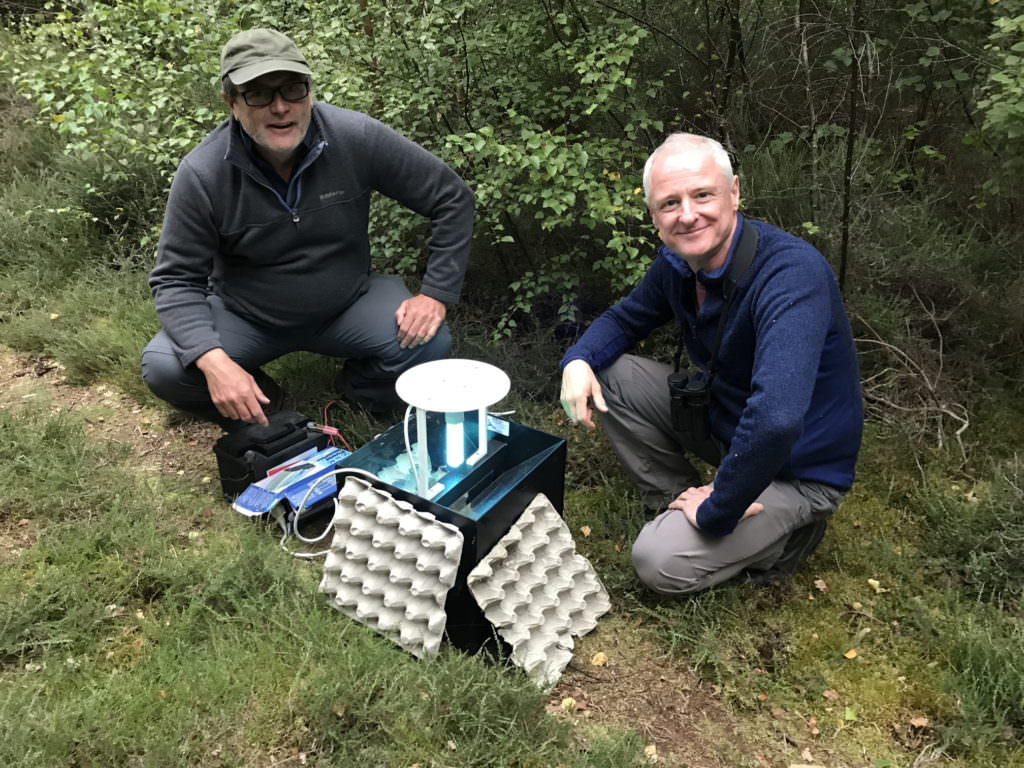
Chris Wilkinson with team member
We are a group of keen amateur lepidopterists from across the South of England. For many years we have been keen to visit the Strathspey area of Scotland during late summer to try to see some of the very special moths that can be found there at that time of year. So from the 5th to 12th August we packed our trapping gear and headed north to our digs close to Grantown on Spey.
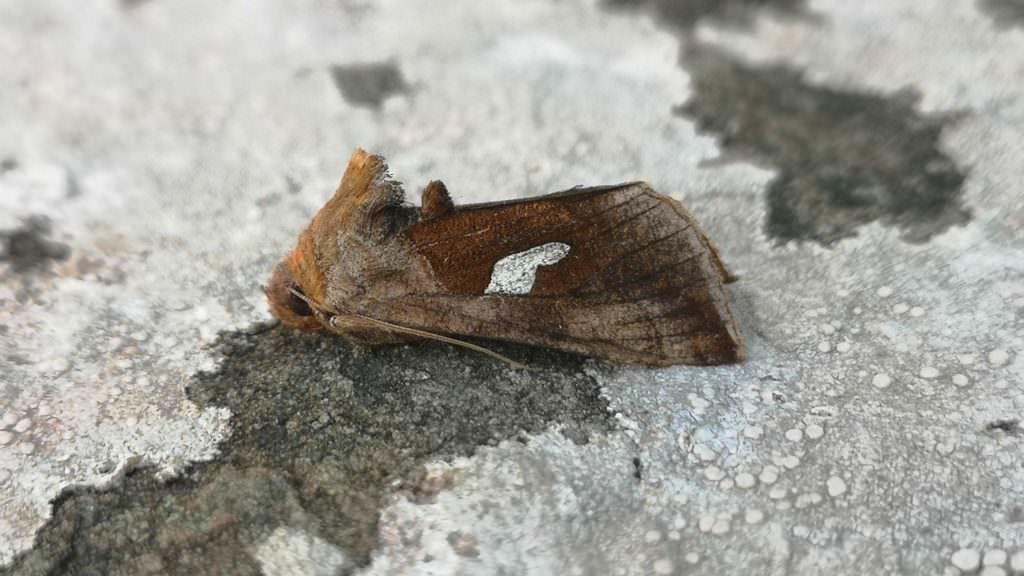
Angle-striped Sallow
The area consists of a rich mosaic of upland habitats supporting many species such as Cousin German or Northern Dart that can only be found in the local area, and those such as the Manchester Treble-bar that are limited to northern upland locations. Special moths we were keen to see included the Dark-bordered Beauty, which is known from Loch Insh and a single site in Yorkshire. For this species we took part in a survey run by the RSPB to monitor the population and extent of their range on the RSPB Loch Insh reserve. We also ran surveys at RSPB Abernethy and on Cairngorm Mountain where many species restricted to the upland moors were recorded.
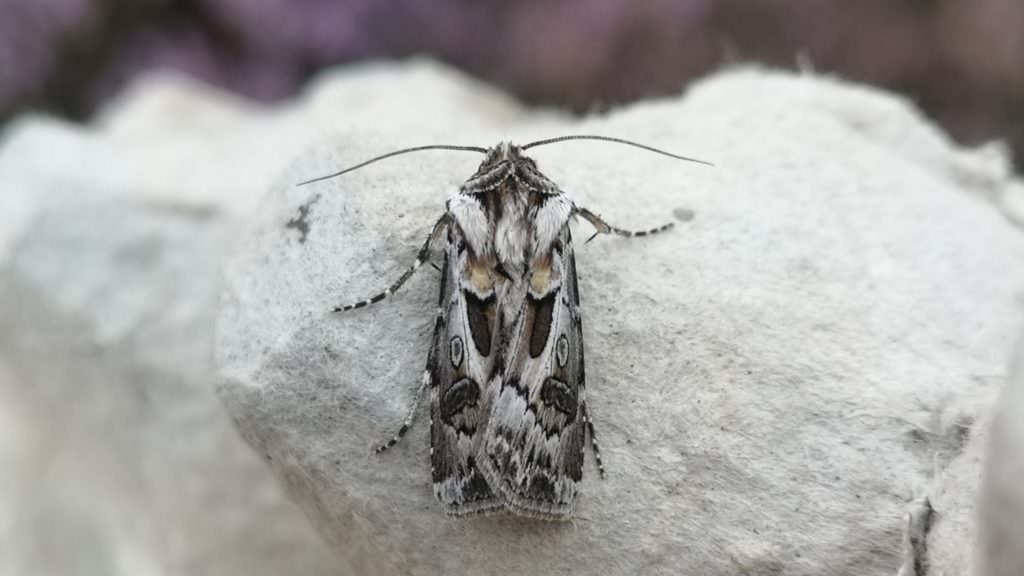
Archers Dart
While we were in the area we were also very keen to visit dune habitat on the Moray Firth to seek some of the species that are found in this unique habitat. We were absolutely delighted when our request to run a survey was granted by the Findhorn Trust and the date of 9th August was tentatively agreed.
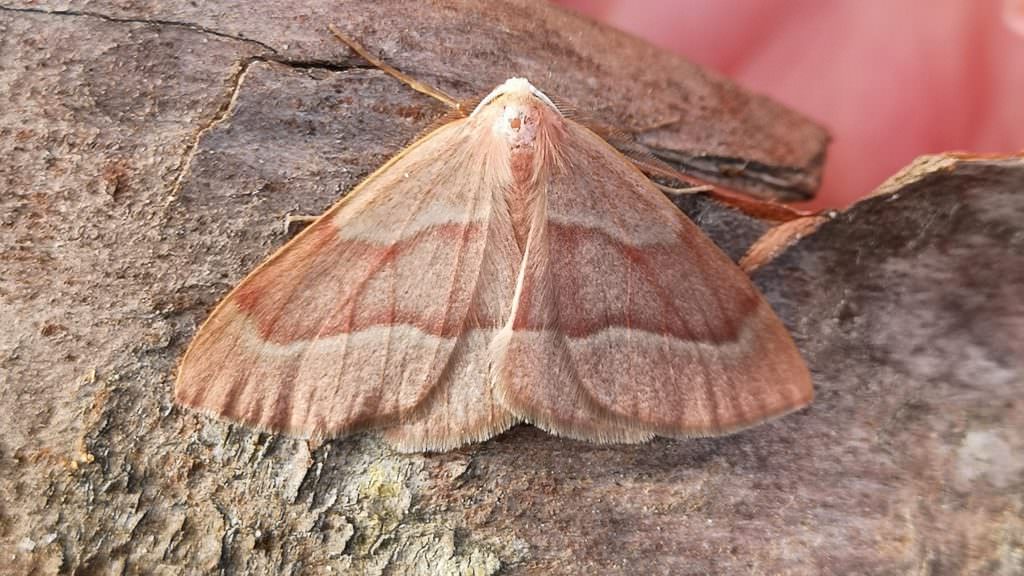
Barred Red
A particular target in the dunes was a declining and difficult-to-see species, the Portland Moth. This species is now only found from Lancashire northwards and requires extensive dunes in good condition. It is a beautiful shade of green with black, white and rufous cross markings but notoriously difficult to trap. Predictably this was one of those critters that eluded us! We did, however, record a much rarer mini beast. Caryocolum blandelloides was described as new to science as recently as 1981 and was discovered as a UK species at Coul Links in August 1994. Its UK range is limited to dune systems in the western Moray Firth so we were aware that we had a chance of seeing this diminutive rarity. We weren’t disappointed and were delighted to find 4 had been attracted to our light traps.
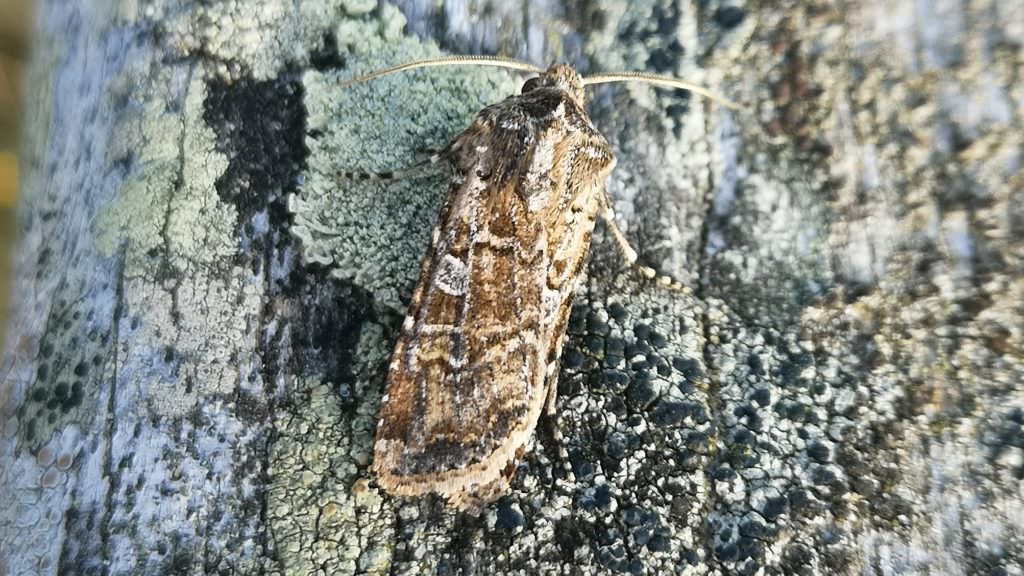
Coast Dart
There were plenty of other sand dune specialities recorded including good numbers of Archer’s Darts and Coast Darts and other northern moths such as Pretty Pinion, Lempke’s Gold Spot and Gold Spangle. In all, 397 moths of 63 species were recorded.
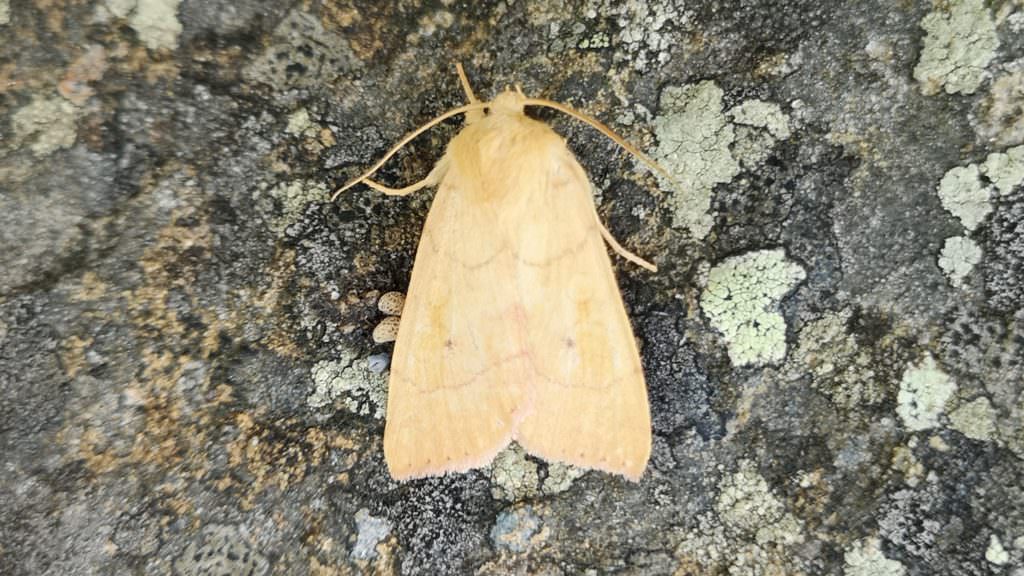
Gold Spangle
We also placed 2 traps in the Findhorn Community Woodland in order to see if the excellent conservation work was paying dividends with the moth fauna. A different range of species were recorded which would be expected in this habitat. The pine feeding Barred Red were present in good numbers as were the Birch feeding Lesser Swallow Prominent. Another scarce Birch species with a northern range, the Angle-striped Sallow, was also recorded. In all, we recorded a respectable 185 moths of 41 species in the woodland which would indicate a good range of laval foodplants present in the area.
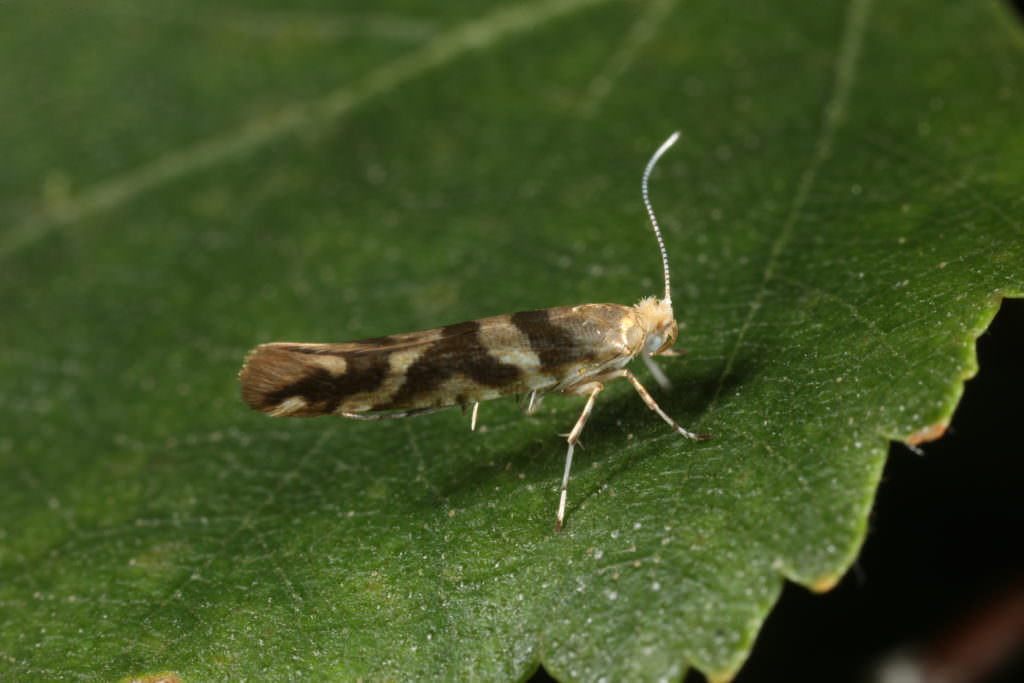
Golden Argent micro-moth (Argyresthia goedarteller birch (Betula pendula), Findhorn Hinterland
Much as we enjoy the pursuit of rare moths in beautiful places, there is a serious aspect to our trapping. All of our records are passed to the relevant county authority and are entered onto the National Moth Recording Scheme database which is run by the conservation charity, Butterfly Conservation. The data we gather contributes to the knowledge of moth populations, their ranges and changes over time. It is an example of citizen science contributing to an awareness of biodiversity on a national scale which would otherwise be unknown.
I would like to add that it was an absolute pleasure and a privilege to visit such a beautiful corner of this little island and contribute in our own little way to the knowledge of what lives there.
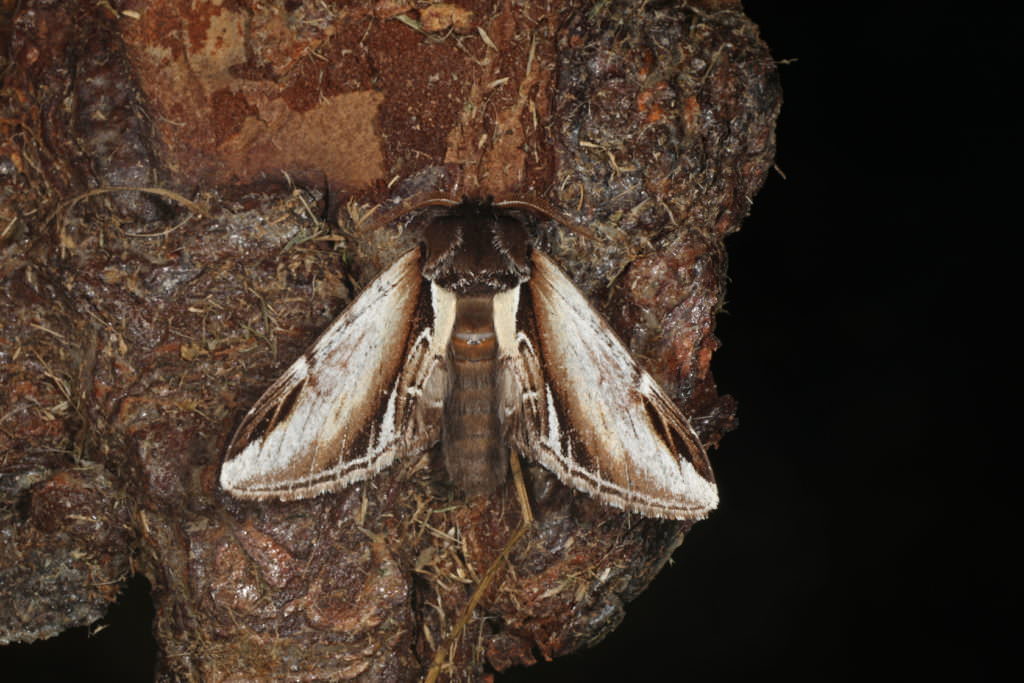
Lesser swallow prominent moth (Pheosia gnoma), Findhorn Hinterland
Chris Wilkinson.
18th August 2023
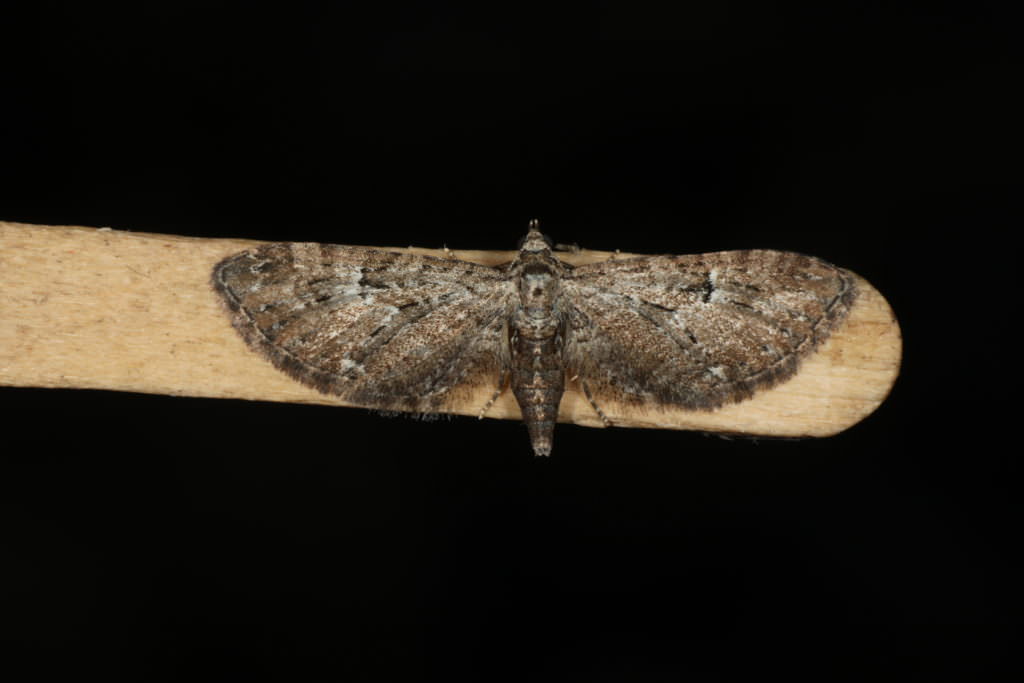
Juniper pug moth (Eupithecia pusillata), Findhorn Hinterland

Moth Trapping at Findhorn
9-10 August 2023
Participants: Chris Wilkinson, Mark Edgeller, Nigel Jones, Robert Kelsh
Chris Wilkinson with team member
We are a group of keen amateur lepidopterists from across the South of England. For many years we have been keen to visit the Strathspey area of Scotland during late summer to try to see some of the very special moths that can be found there at that time of year. So from the 5th to 12th August we packed our trapping gear and headed north to our digs close to Grantown on Spey.
Angle-striped Sallow
The area consists of a rich mosaic of upland habitats supporting many species such as Cousin German or Northern Dart that can only be found in the local area, and those such as the Manchester Treble-bar that are limited to northern upland locations. Special moths we were keen to see included the Dark-bordered Beauty, which is known from Loch Insh and a single site in Yorkshire. For this species we took part in a survey run by the RSPB to monitor the population and extent of their range on the RSPB Loch Insh reserve. We also ran surveys at RSPB Abernethy and on Cairngorm Mountain where many species restricted to the upland moors were recorded.
Archers Dart
While we were in the area we were also very keen to visit dune habitat on the Moray Firth to seek some of the species that are found in this unique habitat. We were absolutely delighted when our request to run a survey was granted by the Findhorn Trust and the date of 9th August was tentatively agreed.
Barred Red
A particular target in the dunes was a declining and difficult-to-see species, the Portland Moth. This species is now only found from Lancashire northwards and requires extensive dunes in good condition. It is a beautiful shade of green with black, white and rufous cross markings but notoriously difficult to trap. Predictably this was one of those critters that eluded us! We did, however, record a much rarer mini beast. Caryocolum blandelloides was described as new to science as recently as 1981 and was discovered as a UK species at Coul Links in August 1994. Its UK range is limited to dune systems in the western Moray Firth so we were aware that we had a chance of seeing this diminutive rarity. We weren’t disappointed and were delighted to find 4 had been attracted to our light traps.
Coast Dart
There were plenty of other sand dune specialities recorded including good numbers of Archer’s Darts and Coast Darts and other northern moths such as Pretty Pinion, Lempke’s Gold Spot and Gold Spangle. In all, 397 moths of 63 species were recorded.
Gold Spangle
We also placed 2 traps in the Findhorn Community Woodland in order to see if the excellent conservation work was paying dividends with the moth fauna. A different range of species were recorded which would be expected in this habitat. The pine feeding Barred Red were present in good numbers as were the Birch feeding Lesser Swallow Prominent. Another scarce Birch species with a northern range, the Angle-striped Sallow, was also recorded. In all, we recorded a respectable 185 moths of 41 species in the woodland which would indicate a good range of laval foodplants present in the area.
Golden Argent micro-moth (Argyresthia goedarteller birch (Betula pendula), Findhorn Hinterland
Much as we enjoy the pursuit of rare moths in beautiful places, there is a serious aspect to our trapping. All of our records are passed to the relevant county authority and are entered onto the National Moth Recording Scheme database which is run by the conservation charity, Butterfly Conservation. The data we gather contributes to the knowledge of moth populations, their ranges and changes over time. It is an example of citizen science contributing to an awareness of biodiversity on a national scale which would otherwise be unknown.
I would like to add that it was an absolute pleasure and a privilege to visit such a beautiful corner of this little island and contribute in our own little way to the knowledge of what lives there.
Lesser swallow prominent moth (Pheosia gnoma), Findhorn Hinterland
Chris Wilkinson.
18th August 2023
Juniper pug moth (Eupithecia pusillata), Findhorn Hinterland